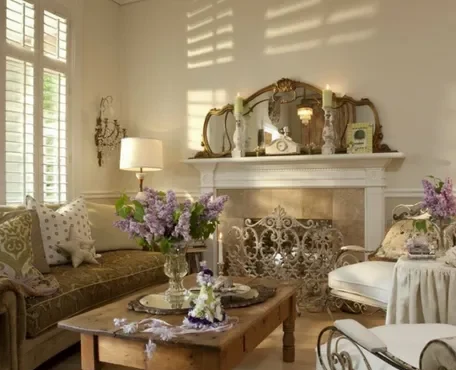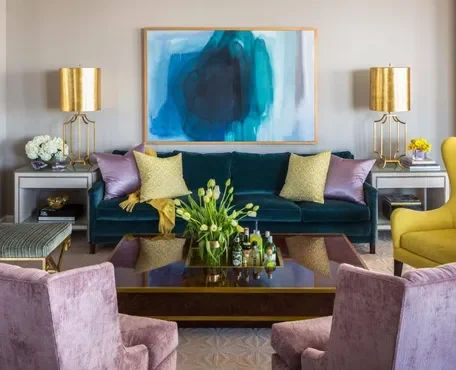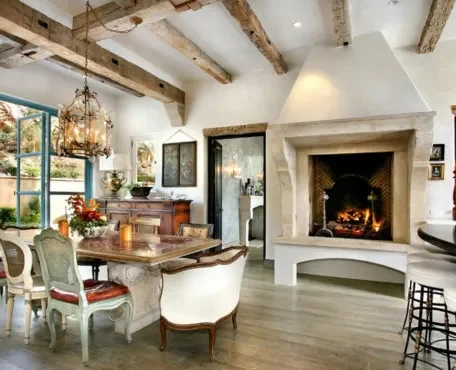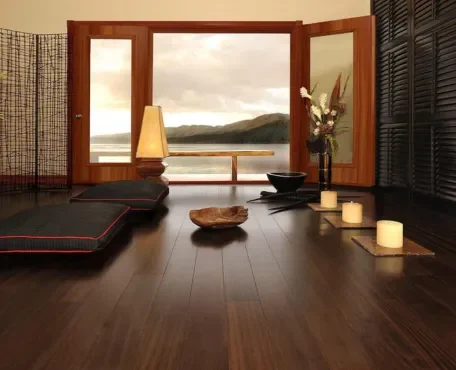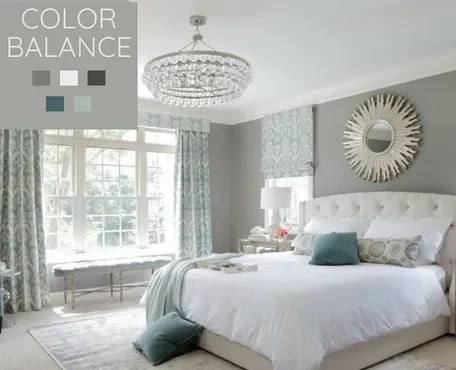
Creating the perfect decor for your home can seem like a daunting task, but with the right approach and a bit of creativity, it’s entirely achievable. Whether you’re moving into a new space or looking to refresh your current one, having a well-designed and harmonious interior can significantly enhance your living experience. In this article, we’ll outline a series of steps to help you achieve the perfect decor for your home, from planning and conceptualization to execution and finishing touches

Step 1: Define Your Style
Before diving into decor decisions, it’s essential to establish your personal style preferences. Take some time to explore various design aesthetics, such as modern, traditional, minimalist, eclectic, or farmhouse, among others. Consider factors like colors, patterns, textures, and overall ambiance. Look for inspiration in interior design magazines, online platforms like Pinterest or Instagram, and visit home decor stores to get a sense of what resonates with you.
Defining your style is a crucial step before making any decor decisions. It involves identifying your personal preferences and aesthetic sensibilities to create a cohesive and harmonious living space.
Here’s a breakdown of how to define your style:
1.Explore Design Aesthetics:
Start by exploring various design aesthetics such as modern, traditional, minimalist, eclectic, farmhouse, or others. Each style has its unique characteristics, from clean lines and neutral colors in modern design to ornate details and rich colors in traditional Perfect decor. Research different styles to understand their key features and visual elements.
2.Consider Colors, Patterns, and Textures:
Think about the colors, patterns, and textures that appeal to you. Do you prefer bold, vibrant hues or soft, muted tones? Are you drawn to geometric patterns, floral prints, or abstract designs? Consider the role of texture in adding depth and visual interest to a space, whether it’s through smooth surfaces, rough textures, or tactile fabrics.
3.Assess Overall Ambiance:
Consider the overall ambiance or mood you want to create in your home. Do you envision a serene and calming atmosphere, or do you prefer a more vibrant and energetic space? Think about the emotions and feelings you want your decor to evoke, whether it’s cozy and inviting or sleek and sophisticated.
4.Seek Inspiration:
Look for inspiration in various sources, including interior design magazines, websites, social media platforms like Pinterest or Instagram, and home decor stores. Pay attention to images and spaces that resonate with you, and identify common themes or elements that you’re drawn to. Keep a visual inspiration board or folder to gather ideas and references.
5.Visit Home Decor Stores:
Take the time to visit home decor stores and showrooms to see different styles and products firsthand. Explore furniture, accessories, and decor items to get a sense of their quality, craftsmanship, and design aesthetic. Take note of pieces that catch your eye and imagine how they could fit into your home’s decor scheme.
6.Reflect on Lifestyle and Preferences:
Consider your lifestyle, habits, and preferences when defining your style. Think about how you use your home and what functions are most important to you. Are you drawn to a minimalist aesthetic because you prefer a clutter-free environment, or do you love the cozy and eclectic vibe of a bohemian style? Your lifestyle and preferences should guide your Perfect decor choices.
By taking the time to explore different design aesthetics, colors, patterns, textures, and overall ambiance, you can define your style and create a personalized Perfect decor scheme that reflects your personality and taste. Remember to trust your instincts and choose elements that resonate with you on a deeper level, creating a home that feels truly yours.

Step 2: Set a Budget
Once you have a clear idea of your preferred style, it’s crucial to set a realistic budget for your decor project. Determine how much you’re willing to spend on furniture, accessories, paint, and any professional services you might require. Be sure to allocate funds for unexpected expenses that may arise during the process. By establishing a budget upfront, you can prioritize your spending and avoid overspending on unnecessary items.
Setting a budget is a fundamental step in any home decor project. It ensures financial responsibility and helps you make informed decisions about where to allocate your funds.
Here’s how to set a budget for your decor project:
1.Assess Your Finances:
Start by assessing your financial situation and determining how much you can realistically afford to spend on your decor project. Consider factors such as your income, savings, and any other financial obligations you have.
2.Prioritize Spending Categories:
Identify the main categories of expenses for your decor project, including furniture, accessories, paint, lighting, flooring, and any professional services such as interior design or painting contractors. Determine which categories are most important to you and allocate funds accordingly.
3.Research Costs:
Research the typical costs associated with each category of expenses to get an idea of how much you’ll need to budget. Look online, visit home improvement stores, and consult with professionals to gather pricing information for furniture, materials, and services.
4.Factor in Contingency Funds:
Be sure to allocate a portion of your budget for unexpected expenses that may arise during the decor process. It’s common for unforeseen issues to come up, such as repairs, replacements, or changes in plans, so having a contingency fund can help you avoid financial stress.
5.Consider Long-Term Investments:
When budgeting for furniture and Perfect decor items, consider investing in high-quality pieces that will last for years to come. While they may have a higher upfront cost, they can save you money in the long run by reducing the need for frequent replacements.
6.Be Realistic:
Be realistic about what you can afford and avoid overspending on unnecessary items. Prioritize your spending based on your needs and preferences, and don’t feel pressured to buy everything at once. You can always add to your decor over time as your budget allows.
7.Track Your Expenses:
Once you’ve established your budget, keep track of your expenses as you make purchases and complete your decor project. This will help you stay within your budget and identify any areas where you may need to adjust your spending.
8.Review and Adjust as Needed:
Periodically review your budget throughout the decor process and make adjustments as needed. If you find that you’re exceeding your budget in certain areas, look for ways to cut costs or reallocate funds from other categories.
Setting a budget for your decor project allows you to prioritize your spending, avoid overspending, and make informed decisions about where to allocate your funds. By taking the time to establish a realistic budget upfront, you can create a beautiful and functional home that reflects your style without breaking the bank.
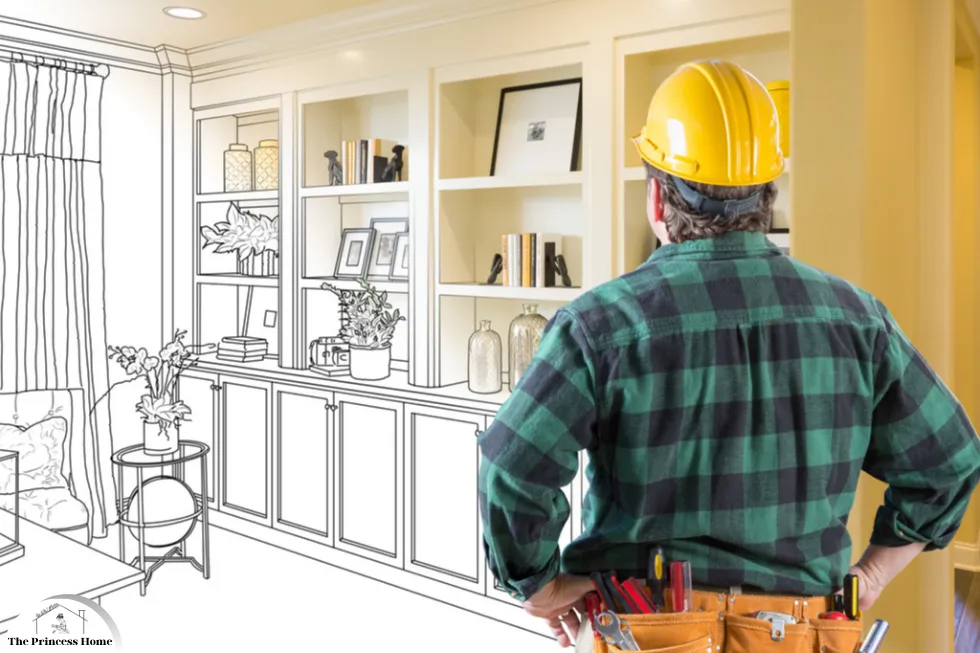
Step 3: Assess Your Space
Before making any decor decisions, thoroughly assess the space you’re working with. Take measurements of each room, including dimensions, ceiling height, and architectural features. Consider the room’s layout and traffic flow, as well as any existing furniture or fixtures that will remain. Identify potential focal points and areas that may need special attention, such as awkward corners or poorly lit spaces. Understanding the characteristics of your space will help you make informed design choices later on.
Assessing your space is a crucial first step in any home decor project. It involves thoroughly evaluating the characteristics and layout of your rooms to inform your design decisions.
Here’s how to assess your space effectively:
1.Take Measurements:
Start by measuring each room in your home, including dimensions, ceiling height, and any architectural features such as alcoves or bay windows. Use a tape measure and note down accurate measurements for walls, doorways, windows, and any other significant elements.
2.Consider Layout and Traffic Flow:
Evaluate the layout of each room and consider how traffic flows through the space. Identify the main entry and exit points, as well as any pathways that people commonly use to move around. Take note of any obstacles or potential obstructions that may affect the flow of traffic.
3.Account for Existing Furniture and Fixtures:
Take inventory of any existing furniture, fixtures, or decorative elements that will remain in the space. Consider their size, scale, and placement, and determine whether they complement your design vision or need to be repositioned or replaced.
4.Identify Focal Points:
Identify potential focal points within each room, such as a fireplace, large window, or architectural feature. These focal points can serve as the centerpiece of Perfect decor and help guide the placement of furniture and accessories around them.
5.Address Special Considerations:
Pay attention to any special considerations or challenges unique to each room. This could include awkward corners, uneven walls, or poorly lit areas. Think about how these factors may impact your design choices and whether any specific solutions are needed to address them.
6.Evaluate Lighting:
Assess the natural and artificial lighting in each room and consider how it affects the overall ambiance. Determine whether additional lighting fixtures or adjustments to window treatments are necessary to improve illumination and create the desired atmosphere.
7.Take Photos and Notes:
Take photos of each room from multiple angles to document its current state and capture any design elements you want to highlight or address. Make notes about your observations, including any ideas or inspirations that come to mind as you assess the space.
By thoroughly assessing your space before making decor decisions, you’ll have a solid foundation to guide your design choices and create a home that not only looks beautiful but also functions seamlessly for your lifestyle. Understanding the unique characteristics of each room allows you to tailor your decor to suit your needs and make the most of your space.
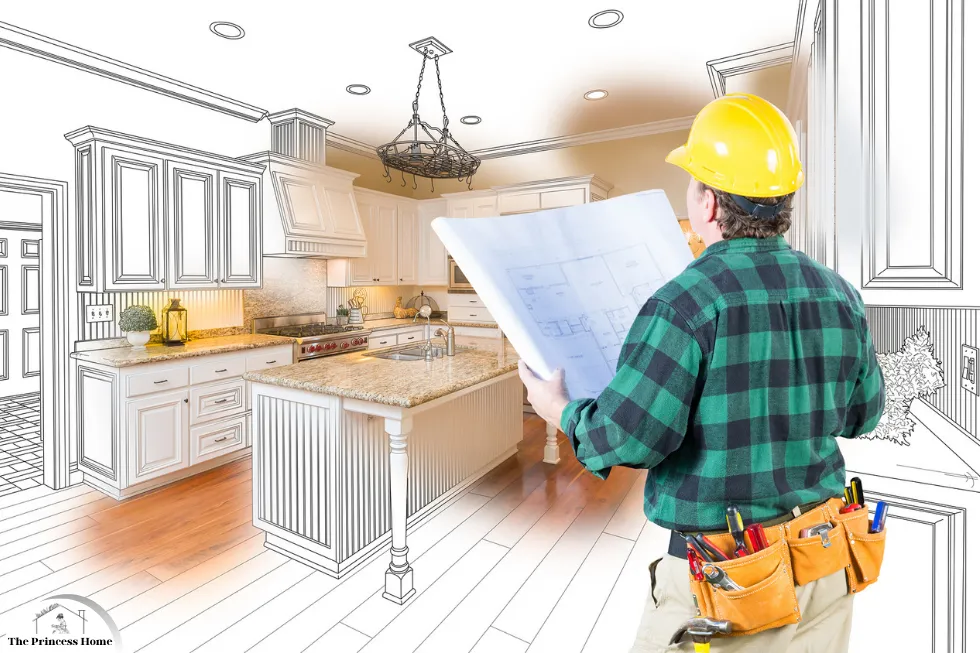
Step 4: Create a Floor Plan
With your space dimensions in hand, create a floor plan to visualize how furniture and other elements will fit together. Consider the function of each room and arrange the layout accordingly. Aim for a balance of functionality and aesthetics, ensuring that there’s ample space for movement and conversation.
Experiment with different furniture arrangements until you find the optimal configuration for each room. Creating a floor plan is a crucial step in designing your home’s layout and maximizing its functionality and aesthetic appeal.
Here’s how to create a floor plan effectively:
1.Gather Measurements:
Start by using the measurements you took during the assessment of your space. Note down the dimensions of each room, including the length and width of walls, doorways, windows, and any architectural features.
2.Choose a Scale:
Decide on a scale for your floor plan, such as 1/4 inch equals 1 foot or 1/2 inch equals 1 foot. Use graph paper or online floor planning tools to ensure accurate proportions when drawing your floor plan.
3.Sketch the Outline:
Begin by sketching the outline of each room on your floor plan, including walls, doorways, and windows. Use a pencil to lightly draw the basic shape of each room according to its measurements.
4.Consider Room Functionality:
Think about the function of each room and how you intend to use the space. Consider factors such as seating arrangements, circulation paths, and focal points when planning the layout.
5.Arrange Furniture:
Experiment with different furniture arrangements within each room to find the optimal layout. Start by placing larger pieces of furniture, such as sofas and beds, in key locations, and then add smaller pieces and accessories around them.
6.Allow for Circulation Space:
Ensure that there’s ample space for movement and circulation within each room. Leave clear pathways between furniture pieces and around the perimeter of the room to facilitate easy movement.
7.Balance Functionality and Aesthetics:
Aim for a balance between functionality and aesthetics when arranging furniture and other elements within each room. Consider the visual flow and balance of the space, as well as the practical needs of its occupants.
8.Experiment with Different Configurations:
Don’t be afraid to experiment with different furniture configurations until you find the layout that works best for each room. Use your floor plan as a tool to visualize how different arrangements will look and feel within the space.
9.Review and Revise:
Once you’ve created a preliminary floor plan, review it carefully and make any necessary revisions. Consider factors such as traffic flow, furniture scale, and overall balance, and make adjustments as needed to achieve the desired outcome.
10.Finalize Your Floor Plan:
Once you’re satisfied with the layout of each room, finalize your floor plan by adding labels for furniture pieces and other key elements. Use a ruler or straight edge to ensure clean lines and accurate dimensions.
By following these steps, you can create a comprehensive floor plan that effectively visualizes how furniture and other elements will fit together within your space. A well-designed floor plan serves as a valuable tool for guiding the rest of Perfect decor decisions and ensuring that your home’s layout meets your needs and preferences.
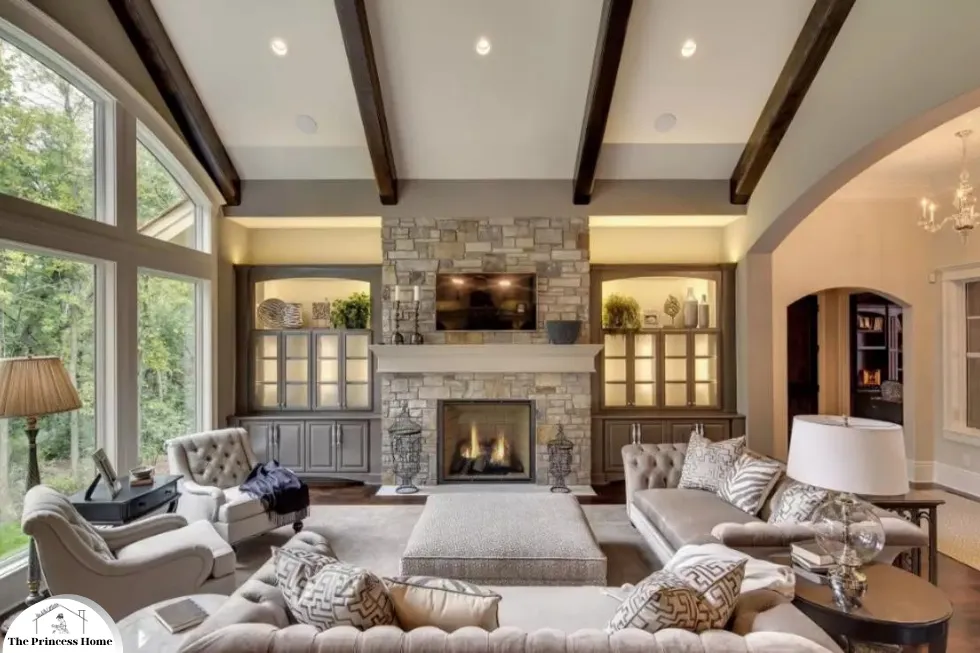
Step 5: Choose Core Furniture Pieces
Selecting the right furniture is crucial to achieving the perfect decor for your home. Invest in high-quality pieces that not only align with your style but also meet your functional needs. Start with core furniture items such as sofas, armchairs, dining tables, and bed frames, focusing on comfort, durability, and versatility.
Consider factors like scale, proportion, and materiality to ensure that each piece harmonizes with the overall design scheme. Choosing core furniture pieces is essential for creating a cohesive and functional living space.
Here’s a guide on how to select the right furniture for your home:
1.Assess Your Needs:
Start by assessing your lifestyle and the specific needs of each room. Consider how you use the space and what furniture pieces are essential for supporting those activities. For example, in the living room, you may need a comfortable sofa for seating, while the dining room requires a table and chairs for meals.
2.Identify Core Furniture Items:
Determine which core furniture pieces are necessary for each room. Common core furniture items include sofas, armchairs, coffee tables, dining tables, chairs, bed frames, and storage solutions such as dressers or cabinets. Prioritize selecting these essential pieces before adding decorative or accessory items.
3.Consider Comfort and Functionality:
Choose furniture pieces that prioritize comfort and functionality, especially for items like sofas, beds, and dining chairs that will be used frequently. Test out different options to ensure they meet your comfort requirements, such as sitting on sofas or lying on beds to assess their support and ergonomics.
4.Focus on Durability and Quality:
Invest in high-quality furniture that will withstand daily use and last for years to come. Look for well-constructed pieces made from durable materials such as solid wood, hardwood frames, or high-quality upholstery fabrics. Pay attention to details like stitching, joinery, and finishes to assess the overall craftsmanship and durability of each piece.
5.Consider Scale and Proportion:
Take into account the scale and proportion of each furniture piece in relation to the size and layout of the room. Avoid overcrowding the space with oversized furniture or choosing pieces that are too small for the room. Aim for a balanced arrangement that allows for easy movement and maintains visual harmony.
6.Harmonize with Design Scheme:
Ensure that each furniture piece harmonizes with the overall design scheme and aesthetic of your home. Consider factors like style, color, and materiality to create a cohesive look throughout the space. Choose furniture that complements your chosen design style while adding visual interest and personality to the room.
7.Evaluate Versatility:
Select furniture pieces that offer versatility and adaptability to accommodate different needs and preferences over time. Look for multi-functional pieces, such as sleeper sofas or extendable dining tables, that can serve multiple purposes and adapt to changing circumstances or lifestyles.
8.Budget Considerations:
While quality and durability are essential, be mindful of your budget when selecting furniture pieces. Prioritize investing in core items that will have the most significant impact on your space, and consider more budget-friendly options or second-hand furniture for less critical pieces or decorative items.
By carefully considering your needs, prioritizing comfort and functionality, and selecting high-quality pieces that harmonize with your design scheme, you can choose core furniture items that lay the foundation for the perfect decor in your home.
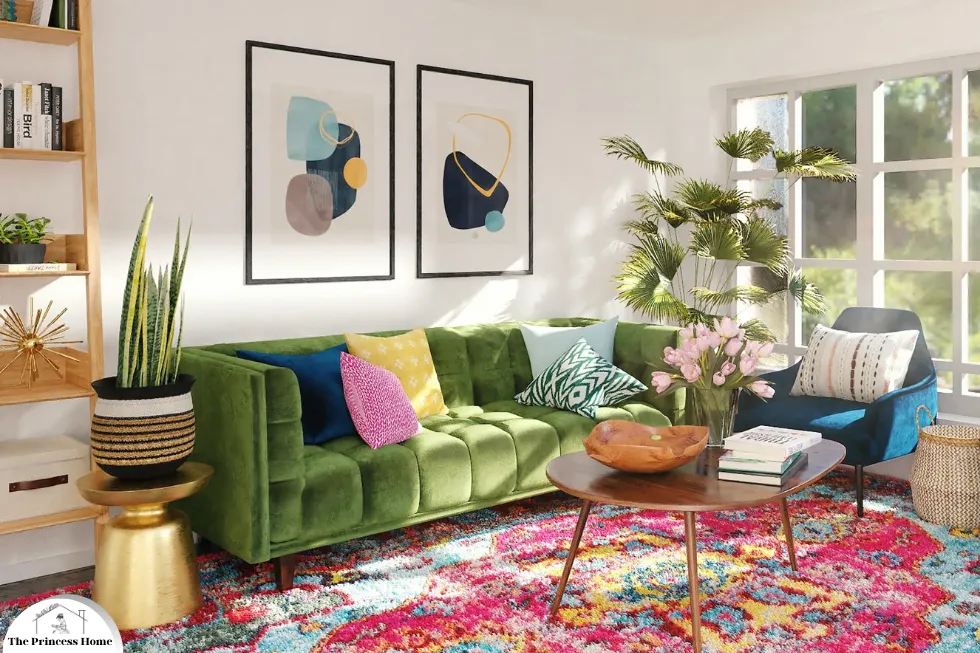
Step 6: Layer Textures and Patterns
To add depth and visual interest to your Perfect decor, incorporate a variety of textures and patterns throughout your space. Mix and match different materials such as wood, metal, glass, and fabric to create contrast and dimension. Experiment with textiles like rugs, pillows, and curtains to introduce softness and warmth. Don’t be afraid to play with patterns, whether it’s through wallpaper, upholstery, or decorative accents.
Just be mindful of maintaining a cohesive color palette to tie everything together. Layering textures and patterns is a key technique to elevate the visual appeal and tactile experience of your home decor.
Here’s how to effectively incorporate textures and patterns into your space:
1.Mix Materials:
Introduce a variety of materials such as wood, metal, glass, and fabric to create contrast and depth. For example, pair a sleek metal coffee table with a plush velvet sofa or combine a rustic wooden accent with a glossy ceramic vase. Mixing materials adds visual interest and creates a dynamic and layered look.
2.Experiment with Textiles:
Textiles play a crucial role in adding warmth and softness to your decor. Experiment with different textures of fabrics such as linen, velvet, wool, and cotton. Incorporate textiles through area rugs, throw pillows, blankets, and curtains to introduce tactile elements and enhance comfort.
3.Play with Patterns:
Incorporate patterns to inject personality and visual intrigue into your space. Experiment with a mix of geometric, floral, striped, or abstract patterns in various scales and colors. Consider using patterns on upholstery, wallpaper, area rugs, or decorative accents such as artwork and throw pillows. Mixing patterns adds depth and character to your decor.
4.Maintain Cohesiveness:
While layering textures and patterns, ensure that they complement each other and contribute to a cohesive overall look. Choose textures and patterns that share a common color palette or design style to tie everything together harmoniously. Avoid overwhelming the space with too many competing textures or patterns, and aim for a balanced and coordinated arrangement.
5.Consider Scale and Proportion:
Pay attention to the scale and proportion of textures and patterns within your space. Mix larger-scale textures and patterns with smaller-scale ones to create visual interest and balance. For example, pair a large-scale geometric rug with smaller-scale floral throw pillows for a dynamic contrast.
6.Focus on Balance:
Achieve a balanced composition by distributing textures and patterns evenly throughout the room. Balance bold patterns with more subtle textures, and vice versa, to create a harmonious visual effect. Consider using textured neutrals as a foundation and adding pops of pattern or color for contrast and emphasis.
7.Layer Thoughtfully:
Layer textures and patterns thoughtfully to create depth and dimension within your space. Experiment with layering different textures and patterns on furniture, walls, floors, and accessories to create visual depth and intrigue. Incorporate layers gradually, starting with larger pieces and building up to smaller accents for a cohesive and well-curated look.
By incorporating a variety of textures and patterns into your decor scheme, you can add richness, warmth, and visual interest to your space. Experiment with different materials, textiles, and patterns to create a personalized and inviting environment that reflects your unique style and personality.
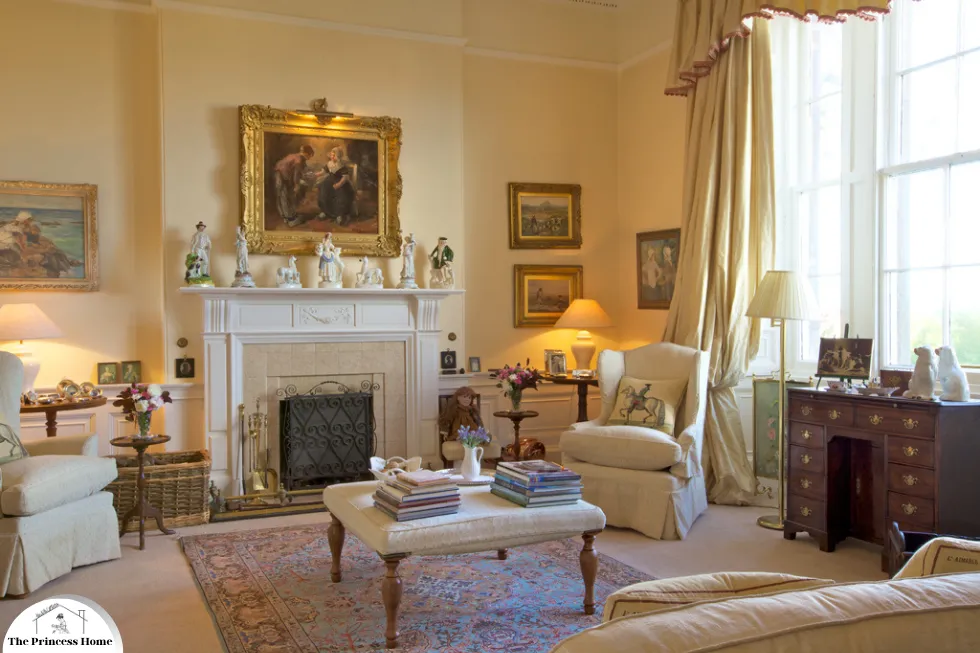
Step 7: Focus on Lighting
Lighting plays a crucial role in setting the mood and ambiance of your home. Incorporate a combination of ambient, task, and accent lighting to illuminate different areas and activities. Install overhead fixtures like chandeliers or pendant lights for general illumination, supplemented by table lamps, floor lamps, and sconces for task lighting and visual interest.
Consider adding dimmer switches or smart lighting controls to adjust the intensity and color temperature to suit various occasions. Focusing on lighting is essential for creating a well-lit and inviting atmosphere in your home.
Here’s how to effectively incorporate different types of lighting to enhance your space:
1.Ambient Lighting:
Ambient lighting provides overall illumination and sets the mood for the entire room. Install overhead fixtures such as chandeliers, flush mounts, or recessed ceiling lights to evenly distribute light throughout the space. Consider the size and height of the room when selecting ambient lighting fixtures to ensure adequate coverage.
2.Task Lighting:
Task lighting is focused illumination designed to help you perform specific activities such as reading, cooking, or working. Incorporate task lighting in areas where concentrated light is needed, such as over kitchen countertops, desks, or bedside tables. Use table lamps, desk lamps, or under-cabinet lights to provide targeted illumination for tasks.
3.Accent Lighting:
Accent lighting adds drama and visual interest by highlighting architectural features, artwork, or decorative elements within your home. Use accent lighting to create focal points and draw attention to specific areas or objects. Install wall sconces, picture lights, or track lighting to accentuate artwork, sculptures, or architectural details.
4.Layer Lighting:
Layering different types of lighting creates depth and flexibility in your home’s lighting scheme. Combine ambient, task, and accent lighting to achieve a balanced and layered effect that enhances both functionality and aesthetics. Experiment with lighting combinations to create various moods and atmospheres for different occasions.
5.Consider Dimmers and Controls:
Incorporate dimmer switches or smart lighting controls to adjust the intensity and color temperature of your lighting fixtures. Dimmers allow you to control the brightness of the lights, while smart lighting systems offer advanced features such as remote control, programmable schedules, and color-changing capabilities. Adjusting the lighting levels can help create different ambiance levels for various activities or times of day.
6.Balance Natural &Artificial Lighting:
Take advantage of natural light sources such as windows, skylights, and glass doors to enhance your home’s lighting. Maximize natural light by keeping windows unobstructed and using sheer curtains or blinds to control glare and privacy. Supplement natural light with artificial lighting as needed to ensure consistent illumination throughout the day and evening.
6.Pay Attention to Fixture Design:
Choose lighting fixtures that complement your home’s decor style and aesthetic. Consider the design, finish, and scale of each fixture to ensure it harmonizes with the overall look and feel of the space. Select fixtures with clean lines and timeless designs that will stand the test of time and blend seamlessly with your decor.
By focusing on lighting and incorporating a combination of ambient, task, and accent lighting, you can create a well-lit and visually appealing environment that enhances the functionality and ambiance of your home. Experiment with different lighting techniques and fixtures to find the Perfect decor lighting solution for each room and activity.
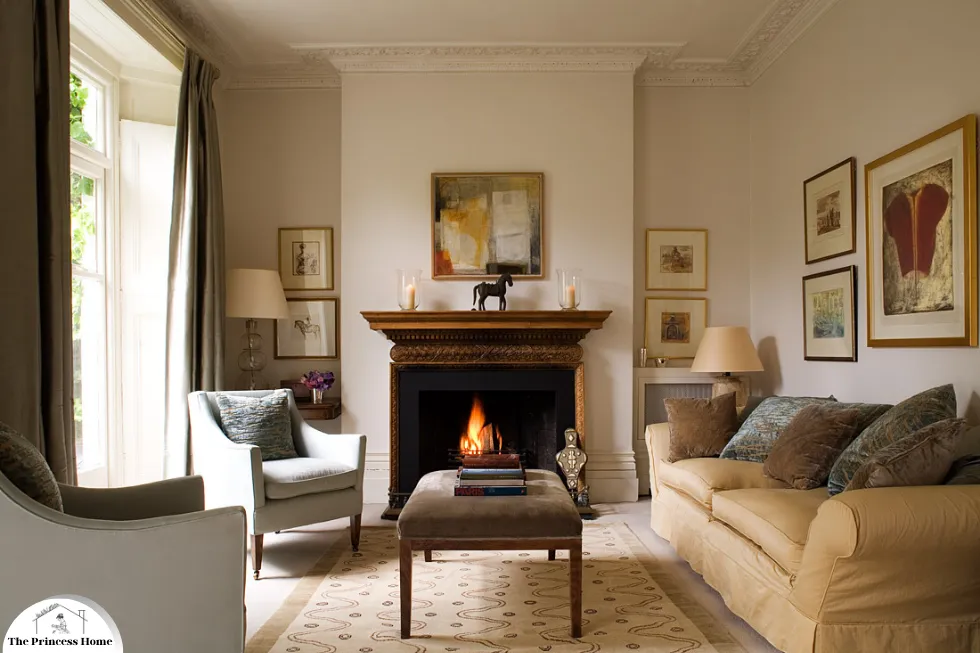
Step 8: Add Personal Touches
Make your home truly your own by incorporating personal touches and meaningful elements into your decor. Display family photos, artwork, and mementos that evoke happy memories and reflect your personality. Showcase your interests and hobbies through collections, books, or decorative objects that spark joy and conversation.
Don’t be afraid to mix old and new items to create a layered and lived-in look that feels authentic and inviting. Adding personal touches to your home decor is a wonderful way to infuse your space with warmth, personality, and memories.
Here’s how to incorporate personal elements into your decor:
1.Family Photos and Artwork:
Display family photos and artwork that hold sentimental value and evoke happy memories. Create a gallery wall with framed photographs or artwork in a prominent area of your home, such as the living room or hallway. Mix and match frames in different styles and sizes for a personalized touch.
2.Mementos and Keepsakes:
Showcase mementos and keepsakes that hold special meaning to you, such as travel souvenirs, heirlooms, or sentimental gifts. Arrange these items on shelves, mantels, or display cabinets where they can be admired and appreciated. Rotate your display periodically to keep it fresh and meaningful.
3.Express Your Interests and Hobbies:
Incorporate elements that reflect your interests, hobbies, and passions into your decor. Display collections of books, musical instruments, sports memorabilia, or hobby-related items that showcase your personality and spark conversation. Use decorative objects or artwork inspired by your interests to add personality and flair to your space.
4.Mix Old and New:
Mix old and new items to create a layered and eclectic look that feels authentic and inviting. Blend vintage or antique pieces with modern furniture and decor for a curated and lived-in aesthetic. Incorporate heirloom pieces passed down through generations alongside contemporary accents to create a sense of history and continuity in your home.
5.DIY Projects:
Get creative and incorporate DIY projects into your decor to add a personal touch. Create artwork, decorative accessories, or furniture pieces that reflect your style and craftsmanship. Use materials and techniques that resonate with you, whether it’s painting, woodworking, or crafting.
6.Customize Your Space:
Customize your space with elements that reflect your lifestyle and preferences. Paint walls in your favorite colors, choose textiles and upholstery that suit your taste, and select furniture pieces that cater to your comfort and functionality needs. Personalize your home to create a space that truly feels like yours.
7.Create Memory Corners:
Designate specific areas in your home as memory corners or vignettes where you can display cherished items and memorabilia. Arrange photos, souvenirs, and keepsakes on a shelf, side table, or wall-mounted display to create a visual narrative of your life experiences and cherished moments.
By incorporating personal touches and meaningful elements into your decor, you can create a home that reflects your unique personality, interests, and experiences. Embrace your individuality and infuse your space with warmth and character to make it truly your own.
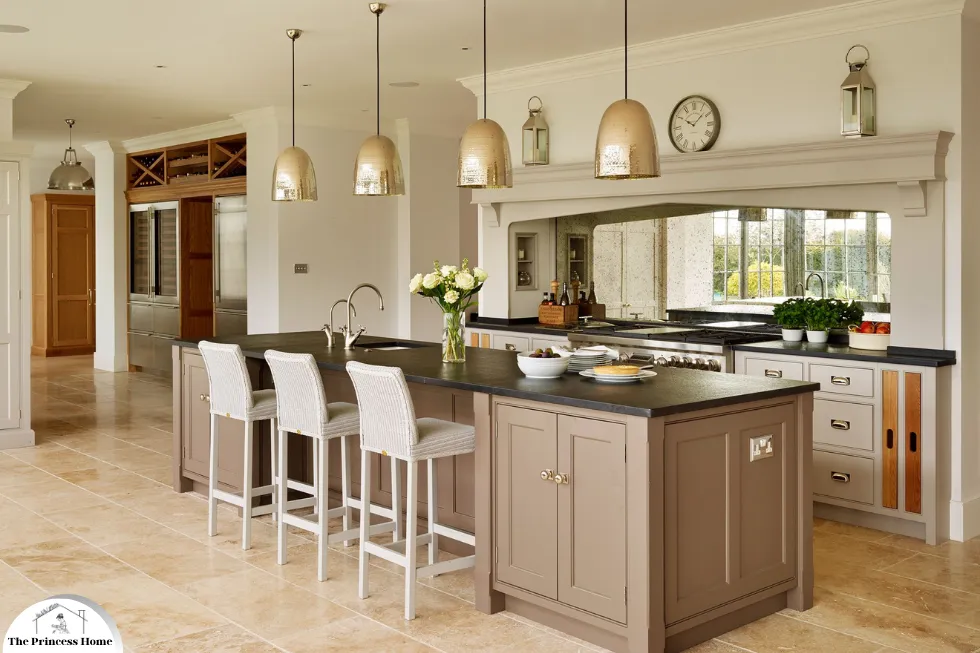
Step 9: Pay Attention to Details
Details matter when it comes to achieving the perfect decor for your home. Pay close attention to finishing touches such as hardware, trim, and accessories to elevate the overall look and feel of your space. Consider the small but impactful changes, like swapping out outdated fixtures, updating cabinet knobs, or adding decorative molding.
Invest in quality materials and craftsmanship that will stand the tes. Paying attention to details is crucial for achieving a polished and cohesive Perfect decor in your home.
Here’s how to focus on the finer points to elevate your space:
1.Hardware and Fixtures:
Upgrade hardware and fixtures throughout your home to enhance its overall aesthetic. Replace outdated knobs, handles, and faucets with stylish and modern alternatives that complement your Perfect decor style. Choose finishes that coordinate with other elements in the room, such as brushed nickel, matte black, or brass.
2.Trim and Molding:
Add architectural interest to your space by incorporating trim and molding. Install crown molding along the ceiling or baseboards along the floor to create a finished and polished look. Consider adding chair rail molding or wainscoting to enhance the character of your walls. Choose trim styles that suit the architectural style of your home and add visual appeal.
3.Accessories and Decorative Accents:
Select accessories and decorative accents that add personality and charm to your space. Incorporate items like throw pillows, vases, candles, and artwork to infuse your home with style and character. Pay attention to scale, color, and texture when choosing accessories to ensure they complement the rest of your Perfect .
4.Lighting Fixtures:
Upgrade lighting fixtures to enhance both functionality and aesthetics. Replace outdated or builder-grade fixtures with statement-making pieces that reflect your design style. Choose fixtures that provide ample illumination while adding visual interest to your space, such as pendant lights, chandeliers, or wall sconces.
5.Window Treatments:
Consider window treatments as an opportunity to add texture, color, and privacy to your rooms. Install curtains, blinds, or shades that complement your decor style and provide light control as needed. Choose fabrics and patterns that enhance the overall ambiance of the room while coordinating with other design elements.
6.Quality Materials &Craftsmanship:
Invest in quality materials and craftsmanship for long-lasting and timeless appeal. Choose furniture, textiles, and Perfect decor items made from durable materials that will withstand daily use and maintain their beauty over time. Pay attention to details such as stitching, seams, and finishes to ensure superior craftsmanship.
7.Edit and Declutter:
Finally, pay attention to the details by editing and decluttering your space. Remove unnecessary items and streamline your decor to create a clean and organized environment. Keep surfaces clear of clutter and arrange accessories thoughtfully to highlight their beauty and significance.
By paying attention to details such as hardware, trim, accessories, and lighting fixtures, you can elevate the overall look and feel of your Perfect decor. These small but impactful changes will add polish and sophistication to your space, creating a welcoming and visually pleasing environment for you and your guests to enjoy.
Certainly! Here are some frequently asked questions related to achieving the perfect decor .
1Q.What if I’m not sure about my design style?
Answer: If you’re unsure about your design style, start by gathering inspiration from various sources such as magazines, websites, and social media platforms. Take note of elements that resonate with you, and gradually refine your preferences until you have a clear idea of your preferred aesthetic. Don’t be afraid to mix styles or experiment with different looks until you find what feels right for you.
2Q.How can I decorate on a tight budget?
Answer: Decorating on a tight budget is entirely possible with some creativity and resourcefulness. Consider DIY projects, thrift store finds, and upcycling existing furniture to save money. Focus on investing in key pieces that will have the most significant impact on your space, such as a statement rug or piece of artwork, while opting for more affordable options for less critical items.
3Q.What if I have a small space to work with?
Answer: Decorating a small space requires careful planning to maximize functionality and visual appeal. Opt for multipurpose furniture that serves multiple functions, such as a sofa bed or nesting tables. Use light colors and strategic lighting to create the illusion of space, and avoid overcrowding the room with too many furniture pieces or accessories.
4Q.How can I make my home feel cozy and inviting?
Answer: To make your home feel cozy and inviting, focus on incorporating warm colors, soft textures, and ambient lighting. Add throw blankets, plush pillows, and area rugs to create layers of comfort. Consider adding elements like candles, indoor plants, and personal touches to add character and make your space feel lived-in and welcoming.
5Q.What are some common decor mistakes to avoid?
Answer: Some common decor mistakes to avoid include over-accessorizing, neglecting scale and proportion, ignoring the importance of lighting, and neglecting functionality for aesthetics. It’s essential to strike a balance between form and function, as well as to edit your decor to avoid visual clutter and maintain a cohesive look.
6Q.How often should I update my decor?
Answer: There’s no set timeline for updating your decor, as it largely depends on personal preference and lifestyle changes. However, it’s a good idea to periodically refresh your space to keep it feeling current and reflective of your tastes. This could involve simple updates like changing throw pillows or artwork, or more significant changes like repainting walls or replacing furniture.
7Q.What if I live in a rental property and can’t make permanent changes?
Answer: If you’re living in a rental property and can’t make permanent changes, focus on temporary decor solutions that can be easily removed or replaced. Consider using removable wallpaper, temporary adhesive hooks, and furniture that can be easily disassembled and moved. Focus on decor elements that can be taken with you when you move, such as rugs, curtains, and accessories.
By addressing these frequently asked questions, you’ll be better equipped to navigate the process of achieving the perfect decor for your home and overcome common challenges along the way. Remember to trust your instincts and have fun expressing your unique style through your decor choices.


